Affiliate disclosure: This post may contain affiliate links. Please see our Privacy Policy.
Nasturtium tincture is an easy to make herbal remedy right from your garden. These edible flowers are also medicinal, and nasturtium tincture is valued for it’s antibacterial, anti-fungal, antiviral and anti-inflammatory properties. It has been used to treat has been used to treat bronchitis and sinus infections, as well as help prevent recurrent UTIs.
It’s easy to make at home with just a few simple ingredients!
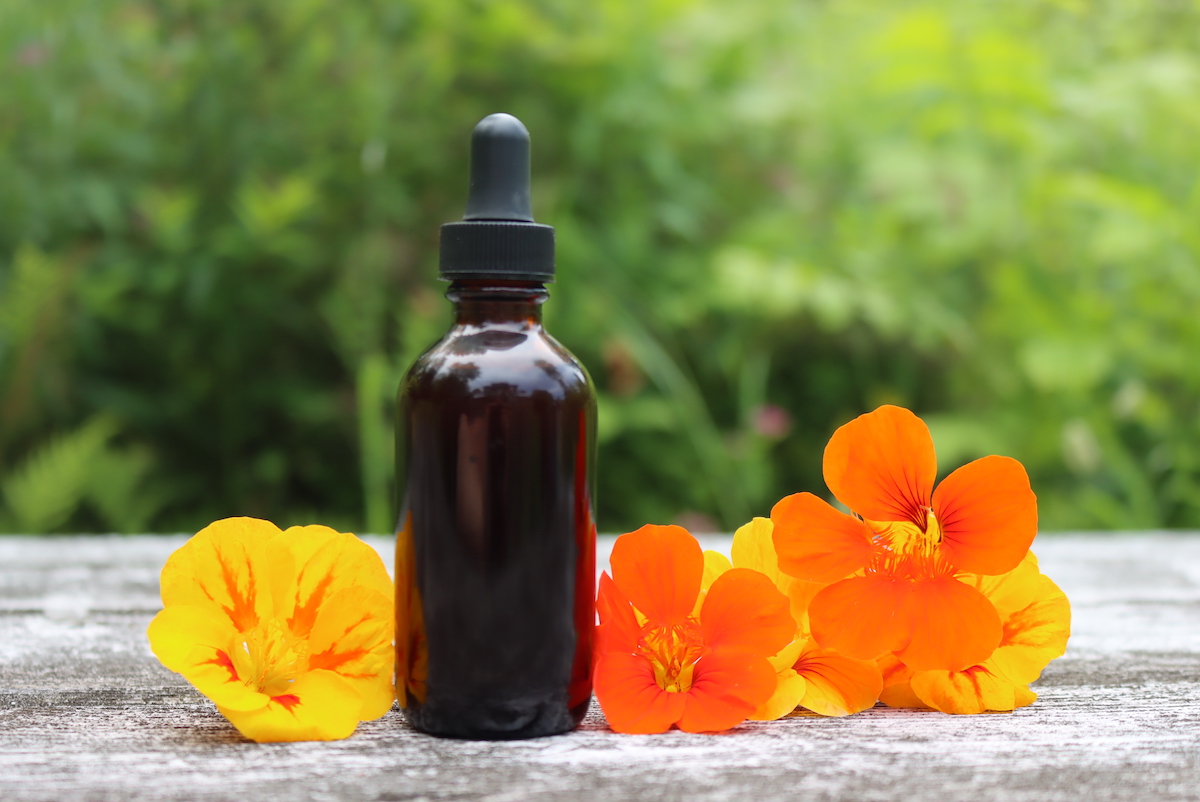
Nasturtiums are fun annual flowers that brighten up every corner of the garden. They’re easy to grow, even in containers, and they’ll decorate your yard with bright colors all season long.
Many people know that nasturtiums are edible flowers, and they’ll pick them for a peppery addition to salads. Beyond the flowers, the whole plant is edible (and delicious). The leaves are often made into nasturtium pesto, and all manner of other nasturtium recipes, even nasturtium blossom jelly!
They’re not just edible, nasturtiums are also medicinal flowers!
The “peppery” flavor in the flowers gives a hint at how they’re used, since they’re a naturally anti-microbial and expectorant. They’re used to treat sinus infections and bronchitis in the upper respiratory tract, as well as UTIs down in the digestive tract.
Their anti-inflammatory properties mean they’re good for the all around body aches from the flu as well, beyond just their respiratory and anti-viral uses.
Nasturtiums are also used topically on minor wounds as a disinfectant, and on minor fungal issues (especially on the nails and feet).
While there are many medicinal uses of nastutriums, one of the easiest and best tested preparations involves making a simple nasturtium tincture.
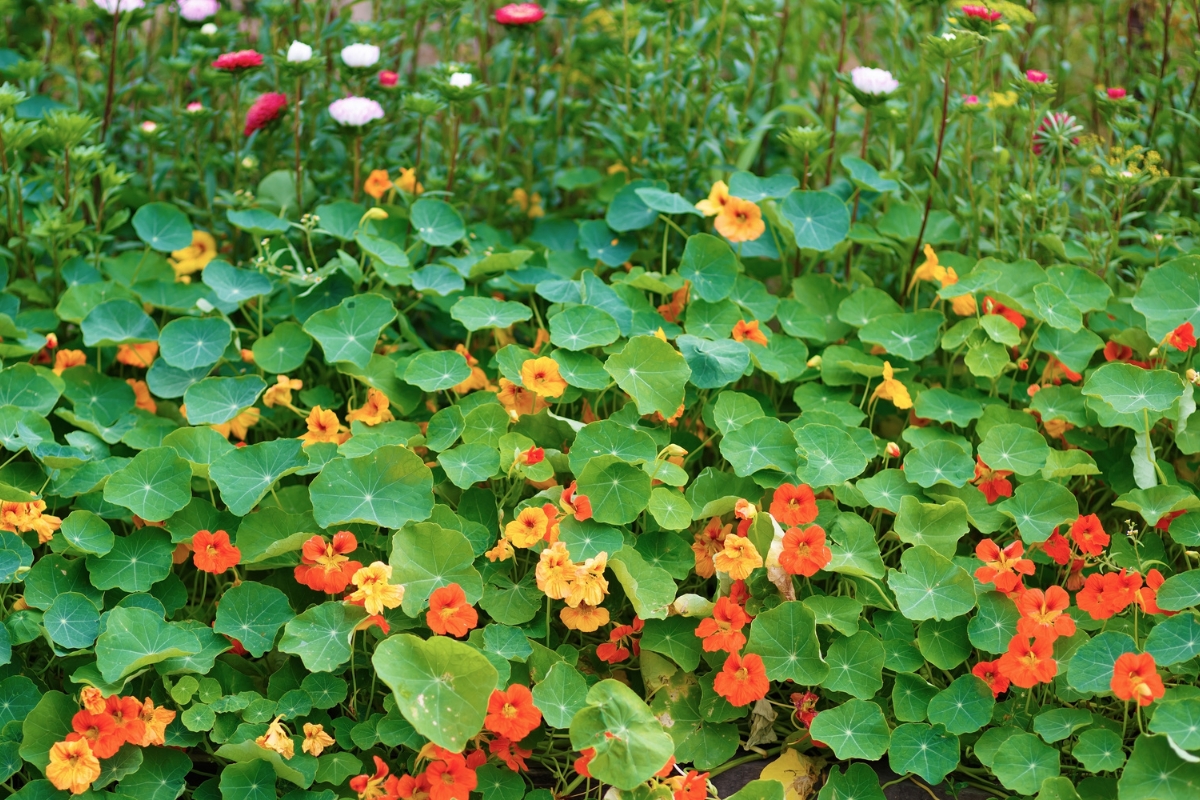
(Always consult your doctor or a clinical herbalist before trying any new herbal remedy, as there’s always the possibility of unintended consequences, allergic reaction, or interactions with other medication. If you’re harvesting wild plant material, make sure you’re 100% confident in your identification and consult multiple sources for your ID. The following is based on my research and experience, but I don’t claim to have any certifications that would qualify me to advise you on your health. Please do your own research and always verify with multiple reputable sources.)
Benefits of Nasturtium Tincture
Nasturtium is packed with vitamin C, a powerful antioxidant, so it’s already a great contender for defending your body against colds and the flu. On top of that, nasturtium has natural antibacterial, anti-fungal, and antiviral properties to help fight off what ails you when flu season rolls around.
Taken as a tincture in combination with other antibacterial herbs, nasturtium has been shown to have a similar efficacy as antibiotics that are typically taken for bronchitis and acute sinusitis. Similarly, these same antibacterial properties have been proven to be effective when treating other types of infections.
Nasturtiums have such strong antibacterial properties partly because of their high concentrations of limonene, a volatile oil found in most parts of the plant. Limonene is a powerful antimicrobial agent and makes nasturtium (and other plants containing this oil) a bacteria-fighting force to be reckoned with!
When combined with horseradish extract, nasturtium extract has been shown to have a preventative effect on patients who suffer from recurrent lower urinary tract infections (it’s important to note that this study looked at a specific product containing nasturtium and horseradish, so precise amounts might have to be replicated to achieve the same results). To make your own herbal remedies for urinary tract infections and because of the potential seriousness of a UTI, I would highly suggest signing up for an herbal medicine course from Herbal Academy, a trusted source for all things related to herbalism.
Nasturtium extract has also been shown to anti-inflammatory properties by blocking the lipopolysaccharide (LPS) induced inflammatory response that occurs naturally in our bodies via the immune system. Soothing inflammation has a wide range of effects, from relieving cold and flu symptoms to calming an upset stomach.
Cautions: If you have kidney damage, avoid nasturtium altogether.
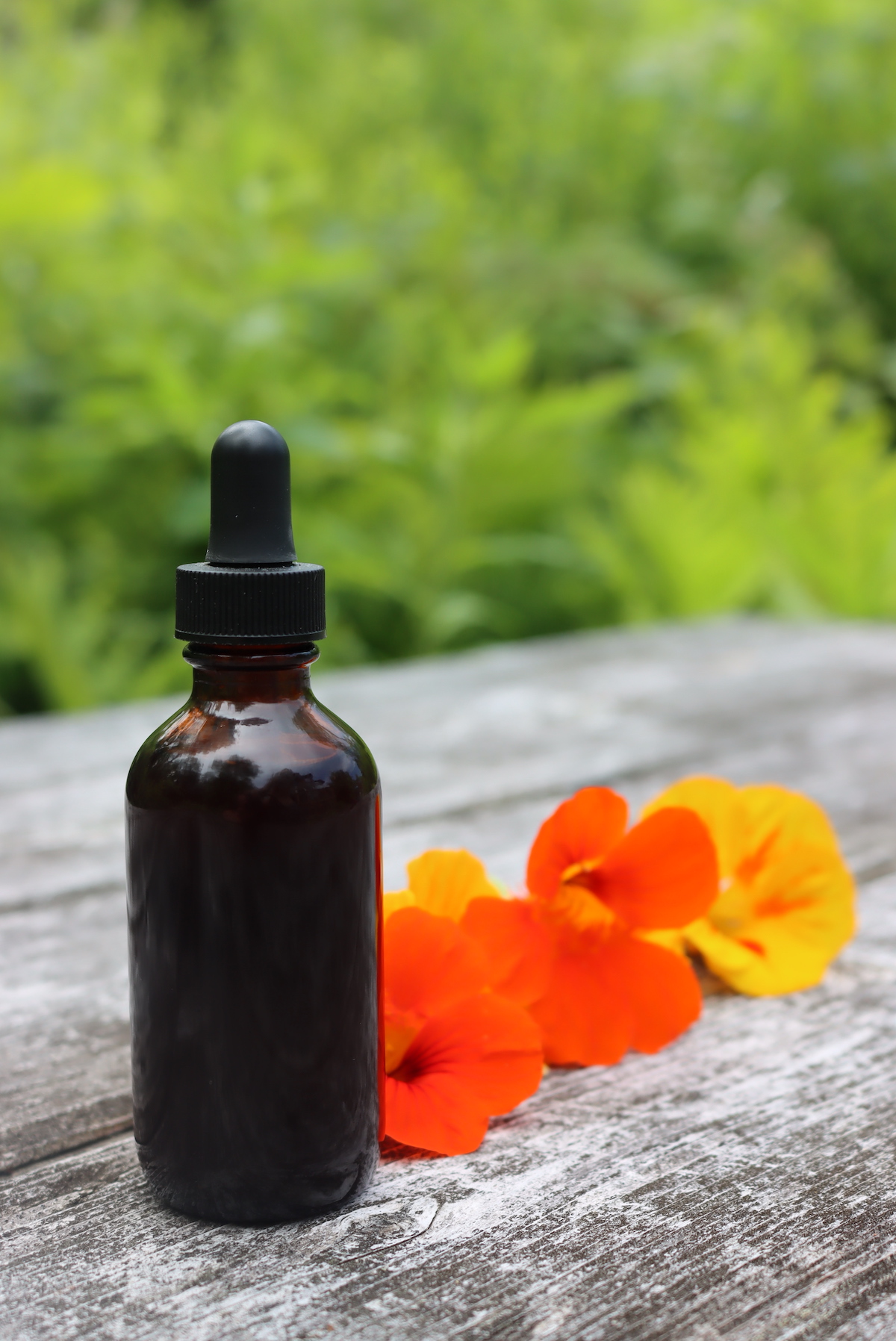
How to Make Nasturtium Tincture
To make a Nasturtium tincture, you’ll need the following ingredients and equipment:
- Fresh nasturtium flowers (enough to fill a jar)
- Vodka (or any other palatable alcohol that’s at least 80 proof/40 percent)**
- One-pint mason jar with lid (amber glass is ideal, but as long as you keep the tincture away from light at all times it won’t make a difference)
- Funnel
- Cheesecloth
- Fine mesh sieve
- Amber glass tincture bottles (with dropper)
*Never use isopropyl/rubbing alcohol for tinctures (or any other remedy you plan on ingesting). Even in small amounts, this type of alcohol is toxic and meant for external applications only.
**If you’re avoiding alcohol, consider making a herbal infused vinegar, or an alcohol free herbal glycerite.
To make the nasturtium tincture, fill a pint jar with fresh nasturtium flowers. Generally, nasturtiums grow quickly and easily, so they’re not a high spray crop…but do be sure they haven’t been sprayed with anything.
They don’t need to be packed tightly, just a loosely packed jar of flowers will do.
Cover the nasturtium flowers with vodka, or whichever alcohol you’ve chosen, and seal the jar with its lid.
Keep the developing tincture in a cool, dark place and give the jar a gentle shake every few days (or whenever you remember).
After about 4 to 6 weeks, it’s time to strain and bottle the tincture.
To do this, you’ll need to line a funnel and a fine mesh strainer (or a piece of cheesecloth). Carefully strain the tincture into another jar, and then use the funnel to bottle the tincture into small amber glass tincture bottles. Squeeze the flowers to get every last bit of tincture out.
Label the bottles and store in a cool dark place. Tinctures generally maintain potency for 1-2 years.
For more information on the general process, I’d suggest reading this guide to making herbal tinctures at home.
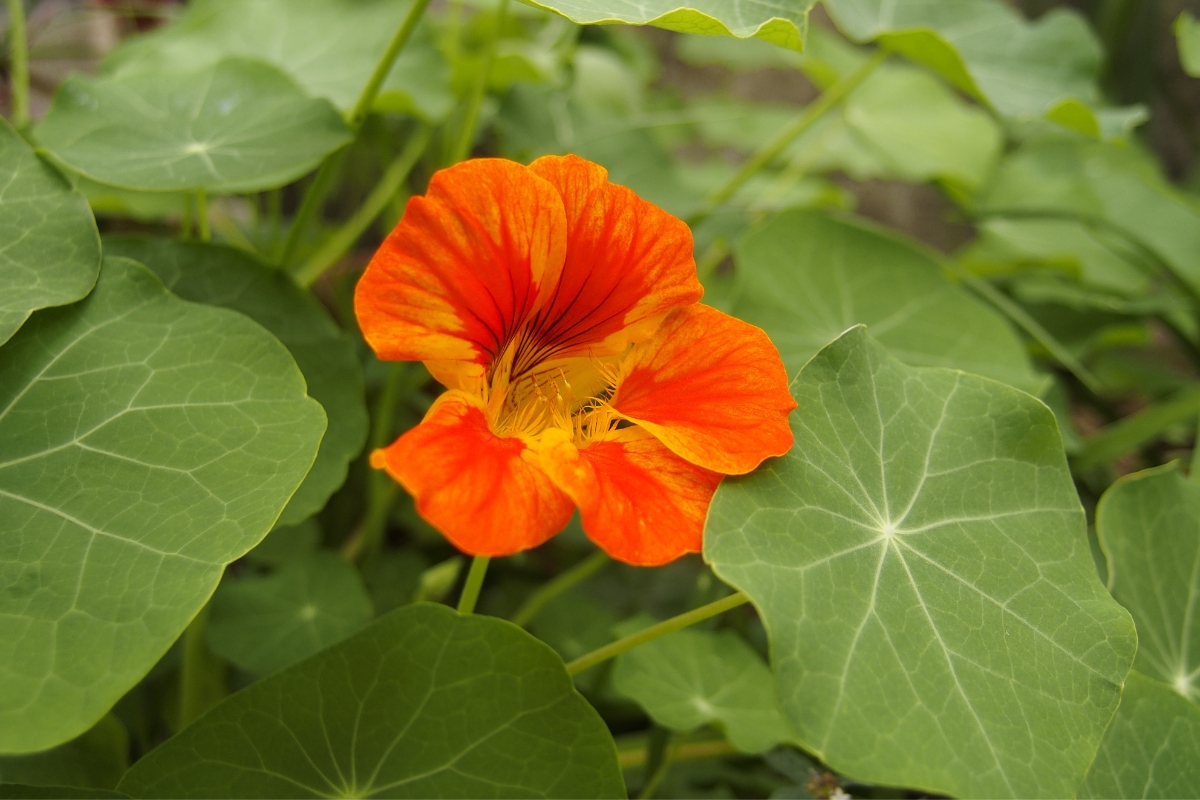
Nasturtium Tincture Dosage
For an exact dosage specific to your body and needs, I’d suggest consulting a clinical herbalist.
Generally, the dosage for tinctures is 1 to 2 droppers full (5ml each) taken 2 to 3 times per day, or as needed.
Nasturtium Formulations
For colds and flu, nasturtium can be combined with expectorant herbs like elecampane, and I particularly love it mixed with thyme tincture to help break up congestion and drive off sinus and respiratory infections.
The studies around nasturtium tinctures for UTI’s all involved combining the flowers with fresh horseradish root to make the tincture, so that’s a good choice if you’re trying to use it to prevent UTIs.
Given that, nasturtium flowers might be a good addition to a homemade fire cider, as fire cider almost always includes horseradish and other antimicrobial plants/herbs. If you’re not familiar with fire cider, it’s a type of herbal oxymel, which is a mixture of herbs infused in vinegar and honey.
A herbal infused honey is also a good choice, and would work well with both nasturtium and horseradish for UTI’s, or for a mixture of respiratory herbs to use as a simple honey cough syrup.
If you’re interested in the science behind combining herbs to enhance their effectiveness, I’d recommend taking this online course in Mastering Herbal Formulations from the Herbal Academy. It covers the science of blending herbs into homemade formulations in detail.
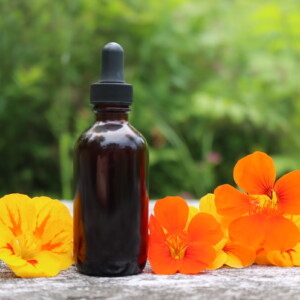
Nasturtium Tincture
Equipment
Ingredients
- Fresh or dried nasturtium flowers
- Vodka or other high-proof alcohol *see notes for making a glycerine tincture
Instructions
- Start by filling a clean mason jar about 3/4 full with fresh nasturtium flowers (or leaves and flowers) or 1/2 full if using dried nasturtium. Dried nasturtium can be found at most herbal supply stores.
- Pour your choice of alcohol, such as vodka, brandy, or rum, over the nasturtium. Make sure the plant material is fully submerged in the alcohol. You’ll need enough alcohol to cover the herbs by at least an inch, and it’s best to use a high-proof alcohol (60 proof or stronger) for an effective extraction.
- Once the jar is filled, securely tighten the lid and give it a gentle shake to help mix the plant material with the alcohol. Store the jar in a cool, dark spot, away from direct sunlight, for about 6 to 8 weeks.
- Every few days, shake the jar gently to ensure even extraction. Be sure to check the alcohol level, adding more alcohol if needed to keep the plant matter fully submerged during the infusion process.
- After the 6 to 8 weeks, it’s time to strain your tincture. Set a funnel with cheesecloth over a dark glass bottle. Pour the tincture through the cheesecloth, pressing the plant material to extract as much of the liquid as possible.
- Once the tincture is strained and bottled, label the bottle with the plant name, the date of preparation, recommended dosages, and suggested uses. Store the tincture in a cool, dry place, away from light, for optimal preservation.
Notes
Alcohol Choices
Vodka is a popular choice for tinctures because of its neutral flavor, but you can also use other spirits such as rum or brandy. Ensure your alcohol is at least 60 proof (30% alcohol) to support proper extraction and preservation. Never use denatured alcohol or isopropyl alcohol to make tinctures, as these are not safe for consumption.Yield
The amount of tincture you’ll get will depend on whether you're using fresh or dried nasturtium. Fresh nasturtium will generally yield slightly more tincture than the alcohol you add. Dried herbs absorb some of the alcohol, resulting in a slightly smaller yield. For a quart jar, you'll need about 2-3 cups of alcohol, or around 1 to 1.5 cups for a pint jar. Ensure that the plant material remains completely submerged in the alcohol throughout the infusion process to prevent spoilage.Alcohol-Free Glycerite Alternative
If you prefer to avoid alcohol, you can make a glycerite tincture. Cover the dried nasturtium with a mixture of 3 parts vegetable glycerin and 1 part distilled water. If you’re using fresh nasturtium, use all glycerin and skip the water. Shake the glycerite daily as it infuses, then strain and bottle it in the same manner as an alcohol-based tincture.Disclaimer on Homemade Herbal Remedies
I’ve been foraging wild medicines and treating my family with herbal remedies for the past 20 years, but I’m self-taught. Be aware that I am not a clinical herbalist, and this is based on my own research and personal experience using medicinal plants. I do not claim to have the experience that’d qualify me to advise you on your health, and I’m only providing this as a reference to encourage a broader interest in medicinal plants.
Please use this as a jumping-off point, but always do your own research and verify anything you read with multiple sources.
It’s always possible to have an adverse reaction to any medicinal herb, and plenty of people are allergic to even gentle herbs like chamomile. Always consult your doctor or a certified herbalist before trying any new medicinal plant. Often, they can have unintended reactions in combination with other herbs and supplements, and many herbs have side effects even when they are effective for their intended purpose.
If you are seriously interested in herbal medicine, I’d suggest investing in a course in herbal medicine, and I’d recommend any of the online courses put out by the Herbal Academy of New England. Specifically, the introduction to herbal medicine course and the family herbalist group of courses.
They also have a mushroom course, covering both medicinal and edible mushrooms, and a Botany and Wildcrafting Course. I’ve taken both and they’re informative, inspiring, and artfully presented.
Herbal Tinctures
Interested in making other homemade herbal tinctures? I have plenty of easy to make herbal tincture recipes!
- Yarrow Tincture
- Chickweed Tincture
- Elderberry Tincture
- Dandelion Tincture
- Burdock Tincture
- Echinacea Tincture
Herbal Medicine Making
Herbal medicines don’t stop at tinctures! Learn how to make more homemade medicine…
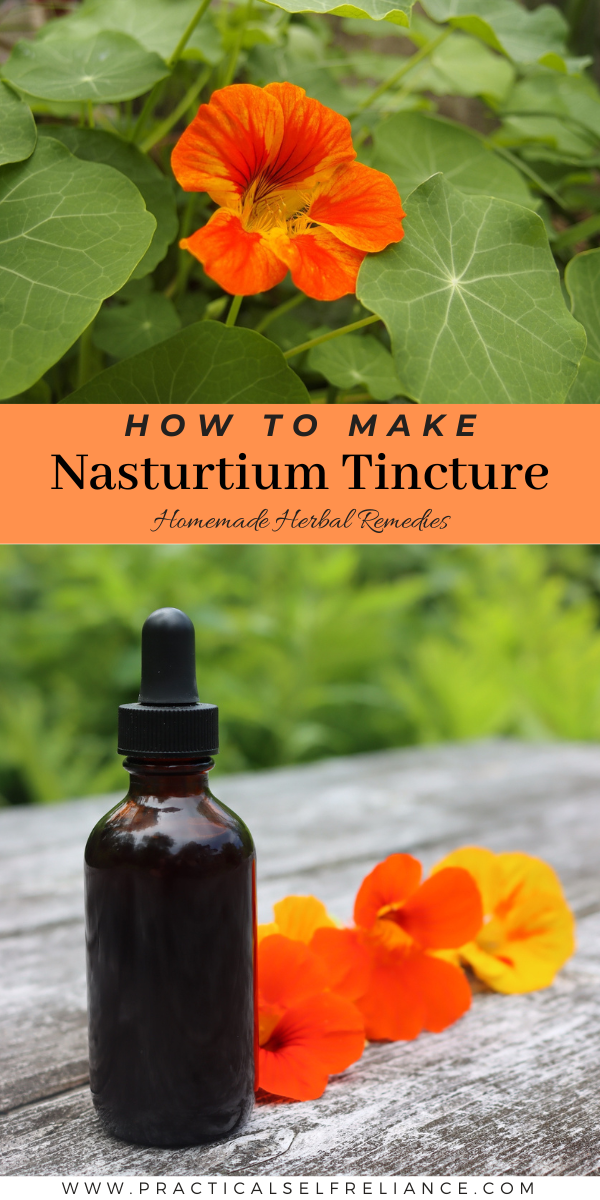
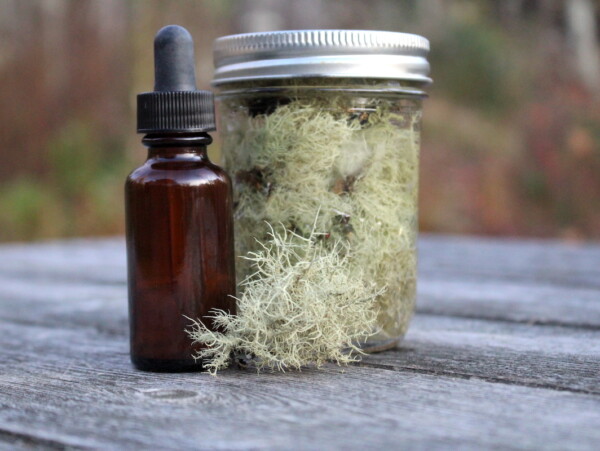
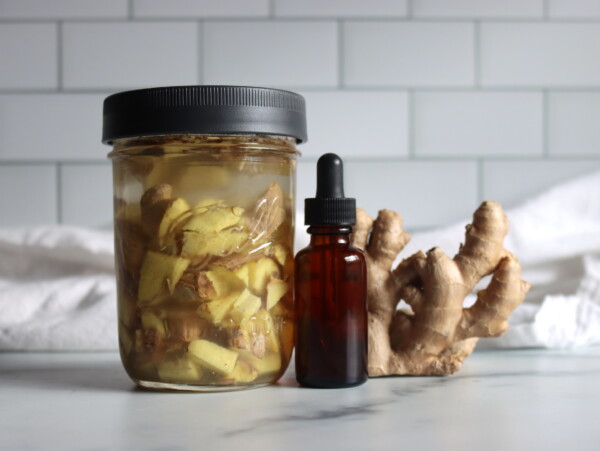
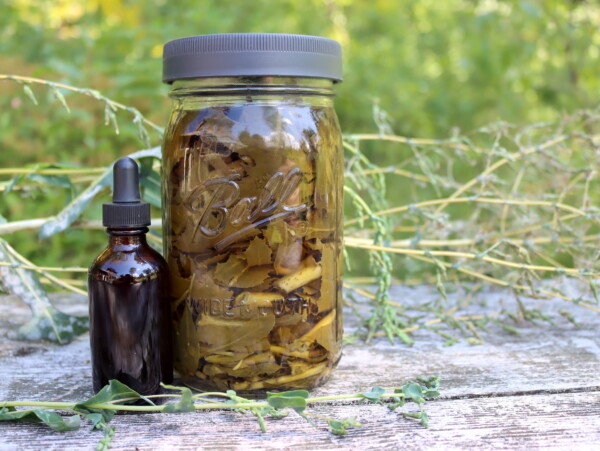
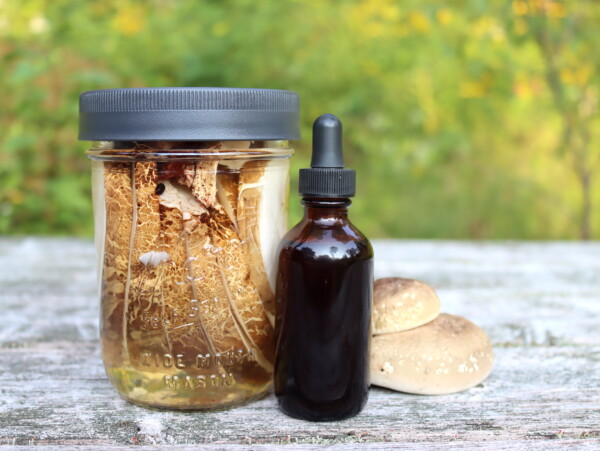










Where do I find dosage information for the variety of uses for the leaves? I’m interested in using it for UTIs and colds. Thank you.
Dosage can really vary from person to person, and I’m not qualified to advise you here. That’s a question for a clinical herbalist. That said, in general, the dosage recommended for most tinctures for most people is around 1-2 droppersful taken 2-3 times per day. That’s just a general tincture dosage that I’ve seen suggested broadly, not specific to this tincture or you personally. Best of luck.
Thank you so much for these recipes. I’ve made some nasturtium tincture but don’t have a dosage for uti or cough. Can you tell me a good amount for that
Thank you again
You’ll have to talk to a qualified herbalist, as dosages depend on the person (age, size, condition, etc). That said, for most herbs and most people, tincture dosage are usually around 1-2 dropperfuls taken 2-3 times per day.
Can you give a recommendation for dosage?
You’ll have to talk to a qualified herbalist, as dosages depend on the person (age, size, condition, etc). That said, for most herbs and most people, tincture dosage are usually around 1-2 dropperfuls taken 2-3 times per day.
What vinegar can I use as a substitute for alcohol, which one would be most effective?
I typically use an apple cider vinegar for infused vinegars. You can either make it yourself or by a good quality organic vinegar with the mother.
Just been reading all you have written about Nasturtium tincture. I do have a chronic uti … without knowing the benefits of nasturtiums (leaves and flowers) i’ve been eating them in salads every day as i love the way they look and taste (and i have lots in my garden)!. Now will make your tincture… sounds great. Just wanted to ask you.. is a tincture the best way? or would fresh be better still? I just wonder if the alcohol kills some of the goodness?
Thanks very much for sharing all your knowledge.. its so interesting.
The alcohol doesn’t really kill the goodness. It’s a great way to preserve herbs for use later. The main difference is that the alcohol only extracts certain properties of the plant. My suggestion would be to make tincture to have on hand when you don’t have access to the fresh plant and still eat the plant fresh when it is in season.
Thank you very much for getting back to me 🙏🏼.
I’ll definitely go ahead and make the tincture .
Also wondering I can put the leaves in the tincture?
Many thanks
Fliss
Many people do use both the flowers and the leaves in nasturtium tincture.
Can I also use the leaves instead of the flowers or with the flowers?
The leaves are edible along with the flowers. I haven’t done any research to know the differences in their constituents to know what benefits the leaves would have but it’s certainly worth a try.
Awesome full detailed guide! Thank you.
What are some ways to use the nasturtium discard once it’s strained out of the tincture?
You’re welcome. So glad you enjoyed the post. I usually just compost any spent herb matter when making a tincture.